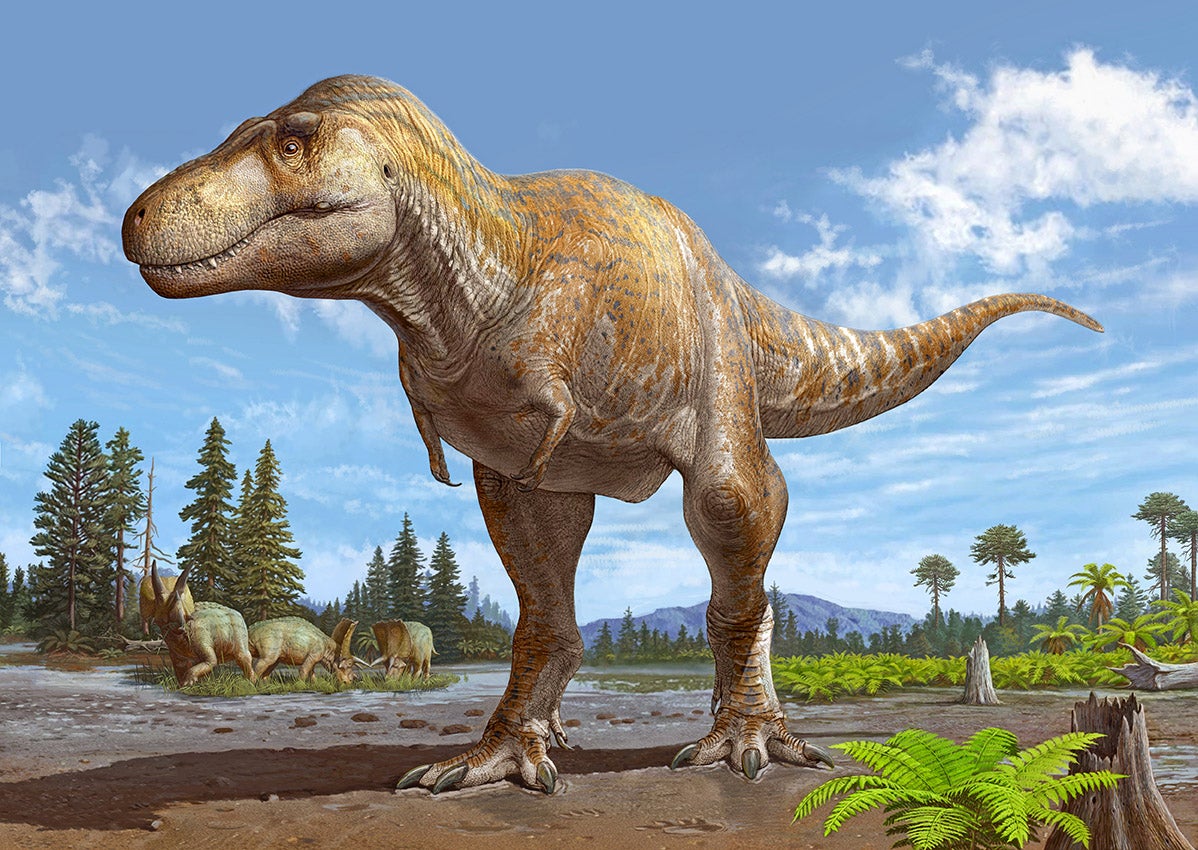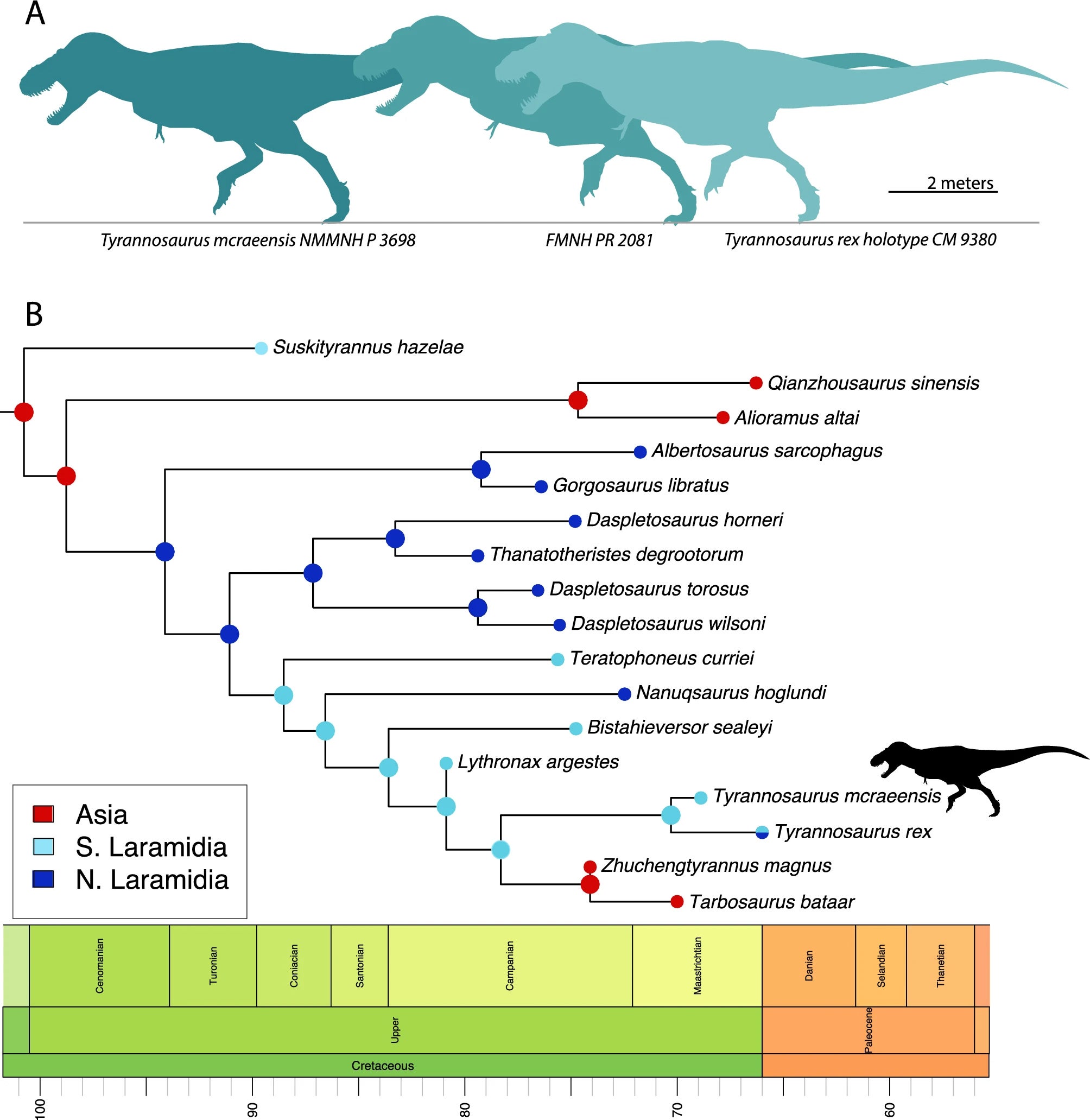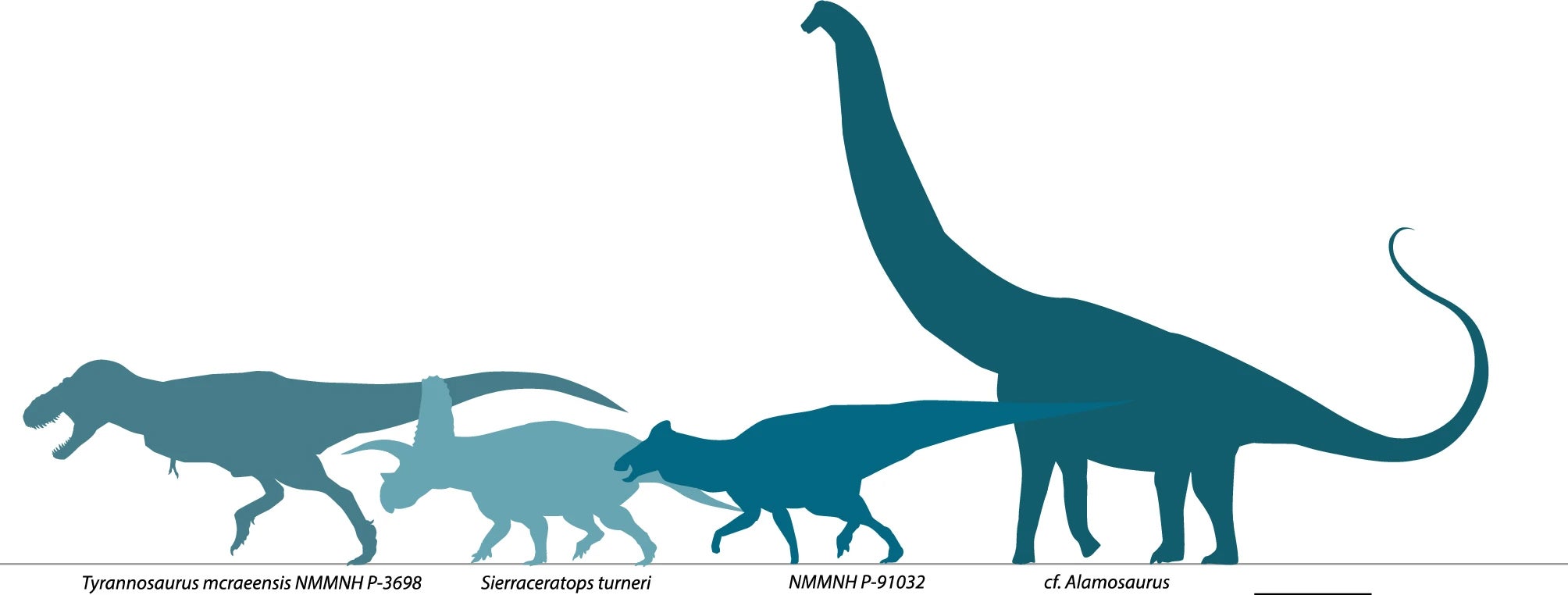Scientists discover distant cousin of T-rex in museum in plain sight
TheTyrannosaurus mcraeensis was on display in an American museum for years and mistakenly described as a T rex

Your support helps us to tell the story
From reproductive rights to climate change to Big Tech, The Independent is on the ground when the story is developing. Whether it's investigating the financials of Elon Musk's pro-Trump PAC or producing our latest documentary, 'The A Word', which shines a light on the American women fighting for reproductive rights, we know how important it is to parse out the facts from the messaging.
At such a critical moment in US history, we need reporters on the ground. Your donation allows us to keep sending journalists to speak to both sides of the story.
The Independent is trusted by Americans across the entire political spectrum. And unlike many other quality news outlets, we choose not to lock Americans out of our reporting and analysis with paywalls. We believe quality journalism should be available to everyone, paid for by those who can afford it.
Your support makes all the difference.The distant cousin of theTyrannosaurus rex was discovered hiding in plain sight after being displayed inside a museum for years.
The creature, known as Tyrannosaurus mcraeensis, was mistakenly displayed as a T rex inside a museum in Albuquerque, New Mexico, before scientists reassessed the fossils.
It is thought to have come from southern America and migrated to what is now Montana, Wyoming and Canada around 67m years ago.
Here, the Tyrannosaurus developed to its terrifying 40 foot size, or the equivalent of a double decker bus, according to University of Bath researchers.
The dinosaur was previously assumed to have evolved in parts of Asia and migrated to North America over millions of years.

“The differences are subtle, but that’s typically the case in closely related species,” Dr Nick Longrich, a co-author from the Milner Centre for Evolution at the University of Bath, told MailOnline.
“Evolution slowly causes mutations to build up over millions of years, causing species to look subtly different over time,” he added.
The findings are based on a partial skull collected years ago from western New Mexico and on display at the New Mexico Museum of Natural History and Science (NMMNHS).
Based on the location of other fossil finds that have previously been dated to between 66 and 75 million years ago, the researchers suggest T mcraeensis may have lived between 71 and 73 million years ago – some five to seven million years before T rex.
Last year, palaeontologists discovered two new species of dinosaur, with one set of fossil fragments coming from a creature thought to be one of the largest to ever exist.

Uncovered in Argentina’s southern Patagonia region, the gigantic species of long-necked herbivorous dinosaur would have weighed 50 tonnes and measured 30 metres in length – roughly equivalent to that of a blue whale.
Its bones were so big that they caused a van carrying them to a laboratory to tip over, with scientists naming the dinosaur ‘Chucarosaurus Diripienda’, meaning scrambled, after its remains were rolled around during the car accident.
The dinosaur lived during the Late Cretaceous period, between 100.5 million and 66 million years ago. A study published in May 2023 described the dinosaur as having “relatively slender fore and hindlimbs” despite its gigantic size.
Join our commenting forum
Join thought-provoking conversations, follow other Independent readers and see their replies
Comments